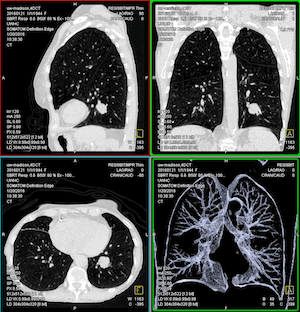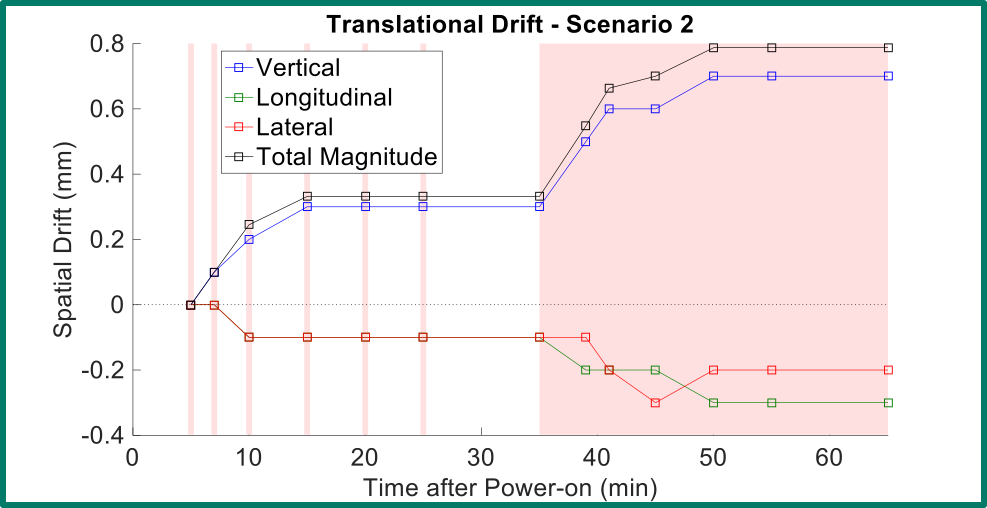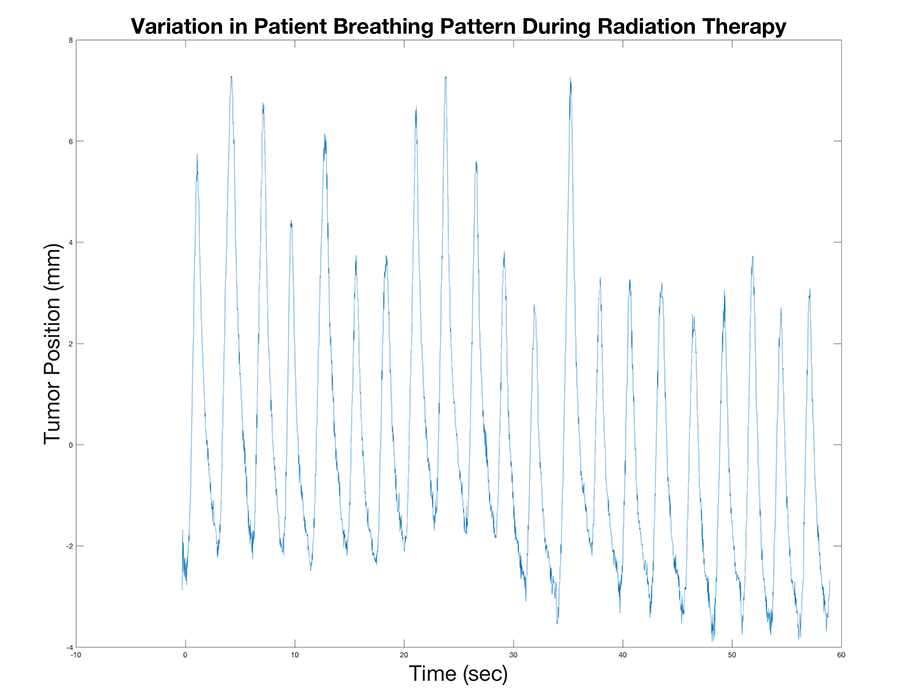
The following are descriptions of several motion management research projects that our medical physicists are currently pursuing:
Evaluating the performance of the optical surface imaging systems (Jacqmin)
Optical surface imaging systems like AlignRT and the Varian Optical Surface Monitoring System (OSMS) are often used for monitoring patients during frameless stereotactic radiosurgery (SRS). This type of radiotherapy procedure demands sub-millimeter accuracy from the system in order to verify that the patient is within allowable treatment margins during treatment. Optical surface imaging systems are known to exhibit spatial drift during warm-up of the equipment. We investigated the spatial drift of the OSMS system, and our work shows that different warm-up scenarios produce different spatial drift behavior. As a result of this work, we know how to eliminate spatial drift so that it can be used for frameless SRS.

Tomotherapy Motion Compensation
Tumor and normal tissue motion during respiration creates many unique challenges in radiation therapy planning and treatment delivery. Most strategies to account for this motion assume the patient’s breathing pattern remains consistent during the entire course of treatment, which may be as long as eight weeks. Unfortunately, humans do not breath as consistently as mechanical phantoms that medical physicists like to use to simulate this behavior. The image below shows variation in tumor position during normal respiration. Note that the tumor motion is large (nearly 10 mm) but also changes substantially from one breath to the next.
Consequently, we require more sophisticated techniques for managing respiratory motion. Through collaborative research with Accuray, Inc., we intend to develop and validate a motion compensation system on the Tomotherapy delivery platform.
